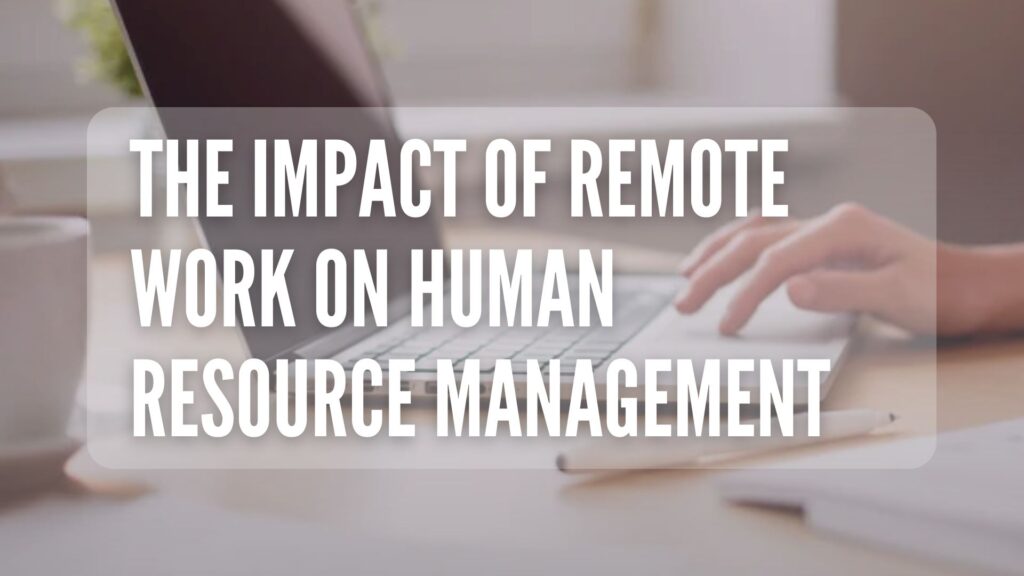
For the longest time, labor has driven a lot of different practices for the workforce to adapt to the ever-changing needs of the employers, employees, and the varying demands of different industries. These practices are usually centered on increasing productivity, maximizing profits, and employee engagement and retention. However, the COVID-19 pandemic challenged these established practices. It halted everything and greatly impacted several businesses, companies, and industries. Arguably, some are affected more than others, but no one can deny that everyone took a hit. To cope with the pandemic, most businesses have shifted to a work-from-home arrangement. An arrangement which, for most countries, especially the Philippines is fairly new, hence the term “new normal”.
Transitioning to the “New Normal”

The Work-from-home setup, commonly known as a remote setup, is no longer an alien term. There is an existing law In the Philippines, Republic Act No. 11165, or the “Telecommuting Act”, that allows employees in the private sector to work in an alternative workplace using any telecommunication and computer technologies since 2018 (Perez, 2022). Subsequently, the Department of Labor and Employment (DOLE) also issued Department Order No. 237 as its implementing rules and revision on March 26, 2019. Nevertheless, the outbreak compelled DOLE to issue another revision which called for the issuance of Department Order No. 237, Series of 2022, or the Revised Implementing Rules and Regulations of Republic Act No. 11165.
The said revision clarified the definitions of critical terminologies about remote work (Hernandez and Gatmaitan, 2023). It also reiterated the terms and conditions applicable to remote work in line with the minimum labor standards under the law (Hernandez and Gatmaitan, 2023). These issuances and revisions demonstrated how the global outbreak forced several businesses, companies, industries, and even the government to accelerate their transition to digital operations.
This transition greatly impacted business operations and brought about numerous effects on the conduct of businesses, companies, and industries’ affairs. Likewise, considering that the employees are the core of every organization, human resources plays a crucial role in the changes that resulted in the global outbreak. Although most employees reported a huge approval for this setup, it has posed several challenges to human resource management and professionals.
The Challenges and Success of Remote Work
Irshad Nazeer, K.D.V Prasad, Arunmozhi Mudiatpan, Sudhansu Sekhar Nanda, Jitendra Sharma, and Kirti Agarwal (2023), revealed in the study they conducted that the transition from working from a traditional office to working remotely might be challenging for employees who used to work in a traditional office. More so the HR team must revisit and review the workplace policies about hours worked, paid time off, benefits, and evaluation of employees’ performance to adapt to the proliferation of digital tools (Nazeer, et. al., 2023).
Furthermore, employees engagement challenged HR management given that before the pandemic most companies did not practice work-from-home arrangements. The HR management must consider the problems that may arise due to a lack of work-from-home infrastructure, background disturbances, and feelings of isolation often make it difficult to keep employees engaged. Subsequently, remote work makes it hard for employees to communicate and collaborate as fewer employees would be near one another during the day.
Nonetheless, the pros outweigh the cons as it is also evident that remote work has provided both employers and employees with several opportunities to maximize their working experience without compromising work-life balance. In a study conducted by Erick Parilla, et. al. (2022), they found that working from home resulted in greater enjoyment, job satisfaction, and even motivation, which significantly contributed to the enhancement of the employee’s job performance. This is often due to the benefits that come with remote work which includes reduced or elimination of commute time and work-life balance.
What’s next for remote work?

With remote work becoming the “new normal” it is imperative for human resource professionals to adapt their policies, practices, and tools geared towards boosting morale and productivity and ensuring that these are tailor-fitted to the needs of this type of arrangement. An apparent challenge is assuring that employees are fully engaged in their jobs and keeping employees from leaving for more desirable places. Listening to employee concerns and providing considerate solutions can solve the issues that may arise from the implementation of remote work
Human resource professionals must warrant the employees’ readiness to transition to remote work through the provision of appropriate knowledge and tools, and in the process, they should also rethink how training may effectively be conducted remotely. They should be able to foster an environment that will be capable of accommodating the needs of both the employees and the upper management.
Furthermore, as remote work tends to blur the boundaries between work and family, human resource professionals must establish explicit and responsive policies, and consider the employees’ emotional well-being to avoid burnout which may affect their productivity.
Remote work has changed how businesses operate and will continue to challenge human resource management. To maintain employee morale and productivity, companies must regularly evaluate the challenges and opportunities of remote work and adapt to the needs of the workforce in the face of technological advancements.
References:
Hernandez, S. S., & Gatmaitan, H. (2023, January 11). Dole issues revised implementing rules and regulations of the Telecommuting Act. SyCipLaw Salazar and Hernandez Gatmaitan Resource Center. https://syciplawresources.com/2023/01/10/dole-issues-revised-implementing-rules-and-regulations-of-the-telecommuting-act/?utm_source=mondaq&utm_medium=syndication&utm_term=Employment-and-HR&utm_content=articleoriginal&utm_campaign=article
Nazeer, I., Prasad, K. D. V., Mudiatpan, A., Nanda, S. S., Sharma, J., & Agarwal, K. (2023, August 3). Work-home interaction: A challenge to human resource management. LBS Journal of Management & Research. https://www.emerald.com/insight/content/doi/10.1108/LBSJMR-03-2023-0012/full/html#sec008
Parilla, E. S., Abadilla, M. E., Villanueva, H., & Tarrazona, N. . (2022). The Impact of Working from Home on Selected Employees’ Job Performance in the Philippines During the COVID-19 Pandemic. Organization and Human Capital Development, 1(1), 62–77. https://doi.org/10.31098/orcadev.v1i1.900
Perez, C. G. D. (2022, November 3). The new “normal”: The Revised Implementing Rules and regulations to the Telecommuting Act. ACCRALAW. https://accralaw.com/2022/10/26/the-new-normal-the-revised-implementing-rules-and-regulations-to-the-telecommuting-act/

